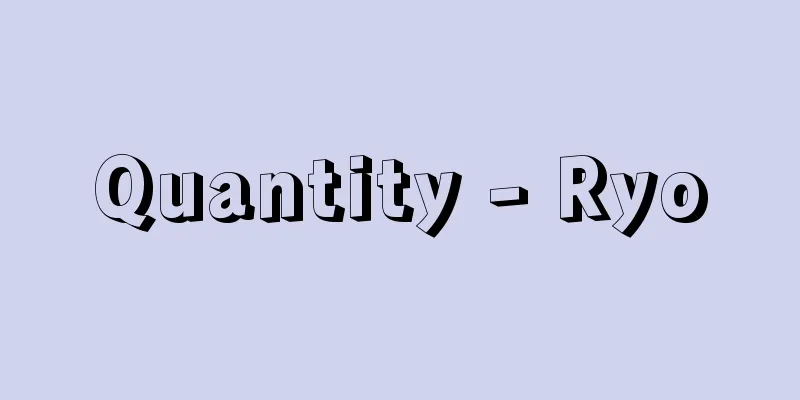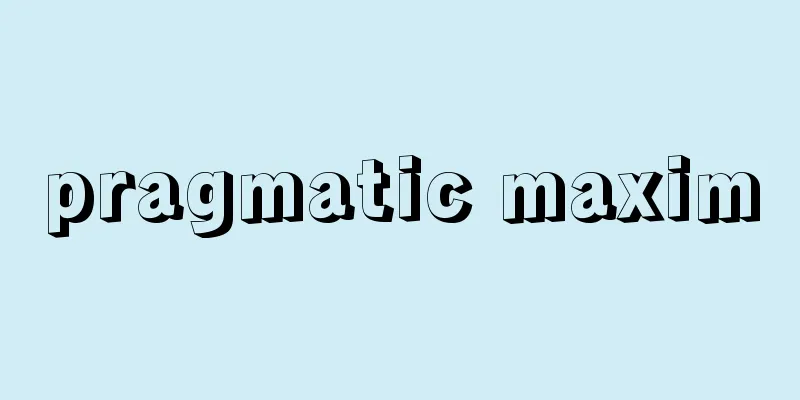Quantity - Ryo

|
A concept used in opposition to quality. The properties of matter are generally "quality", but when they are expressed in a form that can be ordered by comparison, they are called quantity. Color is usually a quality, but when it is expressed as a wavelength range, it can be ordered by comparison, and therefore it is a quantity. It is expressed according to a certain unit, and the regulation of the expression of quantity by unit is sometimes called metric. Because quantities can be objectively compared through calculation, they are more easily incorporated into the methods of natural science than qualitative expressions. Methods of expressing things by appealing to quantity are called quantitative and are distinguished from qualitative methods. Quantitative methods are preferred in the natural sciences because they are convenient for utilizing the certainty of mathematics as a deductive system. However, things expressed quantitatively do not necessarily appear unconditionally in mathematical expressions. Just as adding 20°C water to 40°C hot water does not result in 60°C, it is good to keep in mind that there are various limitations to the interpretation and formulation of quantities even in simple arithmetic operations. In Indian philosophy and Buddhism, quantity refers to cognition, its means and basis. It can be thought of as logic in a broad sense and the knowledge based on it. Dialectical materialism has a fundamental law of transformation from quantity to quality: when a comparable difference in quantity exceeds a certain limit, it changes into an incomparable difference in quality. In formal logic, quantity is a property of a proposition, whether it is universal or singular. In symbolic logic, the concept of a quantifier remains in predicate logic. [Yoichiro Murakami] [Reference] |Source: Shogakukan Encyclopedia Nipponica About Encyclopedia Nipponica Information | Legend |
|
質と対立して用いられる概念。物質がもつ性質は一般には「質」であるが、そのなかで比較によって順序づけができる形に表されるものを量という。色は通常は質であるが、それを波長の幅で表せば、比較による順序づけが可能になるがゆえに量である。一定の単位に従って表され、単位による量の表現の規定を計量metricとよぶことがある。 量は、計算によって客観的に比較できるために、質による表現よりも自然科学の方法のなかに取り込まれやすい。量に訴えて事物を表現する方法を定量的とよんで、定性的と区別する。自然科学では定量的方法が好まれるが、それは、演繹(えんえき)体系としての数学の確実性を利用するのに、定量的方法が便利だからである。しかし量的に表現されたものが、無条件で数学的な表現に載るとは限らない。20℃の水と40℃の湯を足しても60℃にはならないのであるから、簡単な四則演算でさえ、量の解釈と定式化にはさまざまな制限があることは留意しておいてよい。 インド哲学および仏教でいう量は、認識、その手段と根拠をさす。広い意味の論理とそれに基づく知識と考えてよい。 弁証法的唯物論には、量から質への転換という基本法則がある。比較可能な量の差が一定の限界を超えると、比較の不可能な質の差に変化することをいう。 形式論理でいう量とは、命題の性質であって、全称、単称の別をいう。記号論理でも、述語論理における「量化記号」quantifierという概念にそれが残っている。 [村上陽一郎] [参照項目] |出典 小学館 日本大百科全書(ニッポニカ)日本大百科全書(ニッポニカ)について 情報 | 凡例 |
Recommend
Stamp office - stamp office
…The use of stamps as passes can also be seen in ...
Nakanoin family
A family of the Murakami Genji. In the early Kama...
Cow Market
〘Noun〙 A market for trading and buying cattle. In ...
Matsu Island
An island in the sea east of Fuzhou, the capital ...
Akiha Dam
Located in the Tatsuyamacho area of Tenryu Ward...
Sanseki - Sanseki
A name given to three calligraphers of the Heian ...
Iso blenny (Iso ginpo) - Iso blenny (English name) Pictiblennius yatabei
A marine fish of the family Blenniidae (illustrati...
Gamma decay
This is a phenomenon in which a nuclide decays ac...
Plague -
〘 noun 〙 Epidemic fever. Epidemic. [Explanation of...
Kiyohide Nakagawa
Year of death: April 20, 1583 (June 10, 1583) Year...
Alban - Alban
…It is located on a hill near the ruins of the Ro...
Philonotis thwaitesii
...Young capsules are green and spherical, while ...
Kennedy extractor
...There are many ideas for the specific form. Th...
Ikumeirihikoisachi no Mikoto - Ikumeirihikoisachi no Mikoto
…The 11th emperor. His name was Ikumeirihikoisach...
Aleksei Mikhailovich
1629‐76 The second Tsar of the Romanov dynasty of ...
![Japan Industrial Bank [Stock] - Nihon Kangyōginko](/upload/images/67cc702ee4b76.webp)








